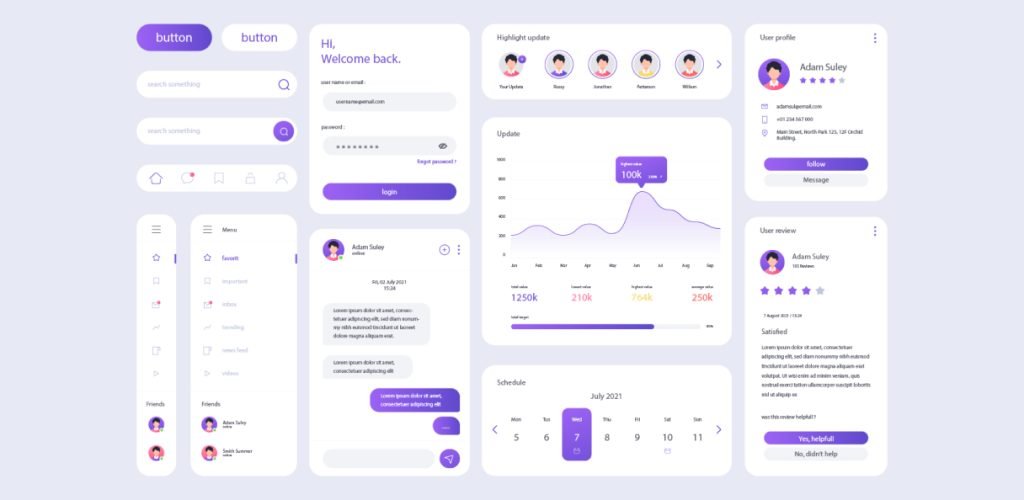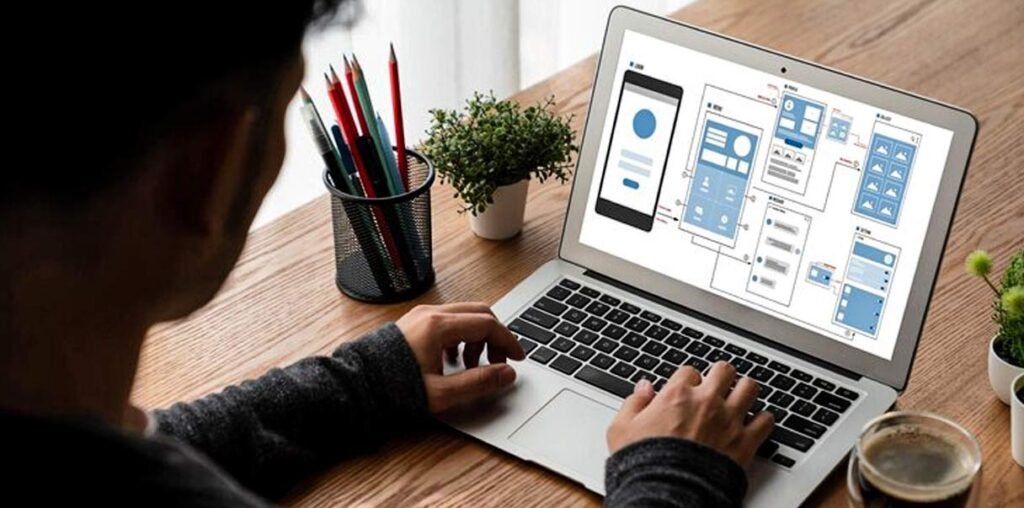“Rule of thumb for UX: More options, more problems.”– Scott Belsky, Chief Product Officer
In today’s fast-paced digital world, users demand seamless experiences when interacting with websites and mobile apps. Designers and developers strive to create interfaces that are intuitive, visually appealing, and easy to use. One approach that has gained popularity in recent years is minimalism in UX design. By focusing on simplicity and clarity, minimalist design can create a more efficient and enjoyable user experience. In this blog post, we explore the importance of minimalism in UX and how it can benefit both users and designers.
So let’s dive in and learn how to design for the user with minimalism.
What is Minimalism in UX Design
Basically, minimalism in UX design is all about keeping things simple and straightforward. In short, “LESS IS MORE.” Instead of bombarding users with tons of visual elements, a minimalist design focuses only on what is necessary to achieve the user’s goal. One of the key benefits of minimalist design is that it helps users stay focused and complete tasks more efficiently. By minimizing distractions, designers can guide users through the interface in a way that feels intuitive and seamless. This is important in mobile and web design, where users often have limited attention spans.
Why it is Important?
In today’s fast-paced digital world, users have limited attention spans. The research shows that the average human attention span is 8.25 seconds. In such cases, a cluttered and complex design will likely cause distraction and confusion. Minimalism can help alleviate this problem, providing a more efficient and enjoyable experience for users. It enables users to achieve their objectives more efficiently and effectively, without being impeded by unnecessary features. Therefore, by streamlining the user experience, minimalism in UX design can also improve user engagement, reduce bounce rates, and increase conversions.
Benefits of Minimalism in UX Design
When we talk about minimalism in UX design, it means keeping things simple and straightforward, without including any unnecessary elements. This approach has several advantages for users and designers alike such as:
- Improves User Experience
Firstly, minimalism simplifies the interface, making it easier for the user to navigate and accomplish their tasks. This results in a smoother user experience.
- Increases Usability
Secondly, it enhances the usability of an interface. When we limit the number of elements on a page, users are less likely to become overwhelmed or confused.
- Reduces Cognitive Overload
With less visual noise and clutter, users can process information more quickly and easily. This reduces cognitive overload and enables users to focus on the task at hand.
- Enhances Aesthetics
Minimalist designs have a clean and elegant aesthetic that is visually pleasing to the user. This enhances the overall user experience and makes the interface more memorable.
- Faster Loading Time
Another benefit of minimalism is that it can improve page load times. Keeping the design simple reduces the amount of code and data that needs to be loaded.
Best Practices for Designing with Minimalism in Mind
When designing with minimalism in mind requires careful attention to detail and a focus on simplicity. Here are some best practices:
- Define the Essential Elements
Start by identifying the essential elements that are needed to make the design functional. Focus on the core features and functions that will provide the most value to users.
- Simplify Navigation
Make it easy for users to navigate the interface by keeping the menu and navigation options simple and clear. Limit the number of options to only the most important ones.
- Use Whitespace
Negative space, or whitespace, is the empty space around design elements. Use negative space to create a clean and uncluttered design, making it easier for users to focus on the most important elements.
- Keep Typography Simple
Use simple and clear typography to enhance readability and legibility. Limit the number of fonts used and be consistent with font sizes and styles throughout the design.
- Limit Color Palette
Color can add interest and depth to a minimalist design, but it should be used thoughtfully. Use a limited color palette to create a cohesive and consistent design. Choose colors that complement each other and support the brand identity.
- Use Iconography
Icons can help to communicate information quickly and effectively. Use simple and clear iconography that is easy to understand.
- Ensure Consistency
Consistency is key in a minimalist design. Make sure that all design elements are consistent in style, size, and placement. This will create a sense of coherence and unity throughout the interface.
- Test and Iterate
Test the design with users and iterate based on their feedback. This helps to refine the design and ensure its effectiveness and efficiency for users.
In conclusion, designing for the user is all about creating an experience that is both functional and enjoyable. Minimalism in UX design is a powerful tool that can help achieve this goal by simplifying the interface, reducing clutter, and providing users with clear and concise information. Whether you are creating a website, a mobile app, or any other digital product, remember that minimalism can be a valuable approach to consider. So the next time you are designing for the user, think minimalist and see how it can enhance the user experience, all while keeping in mind the importance of SEO to focus on users not search engines.





